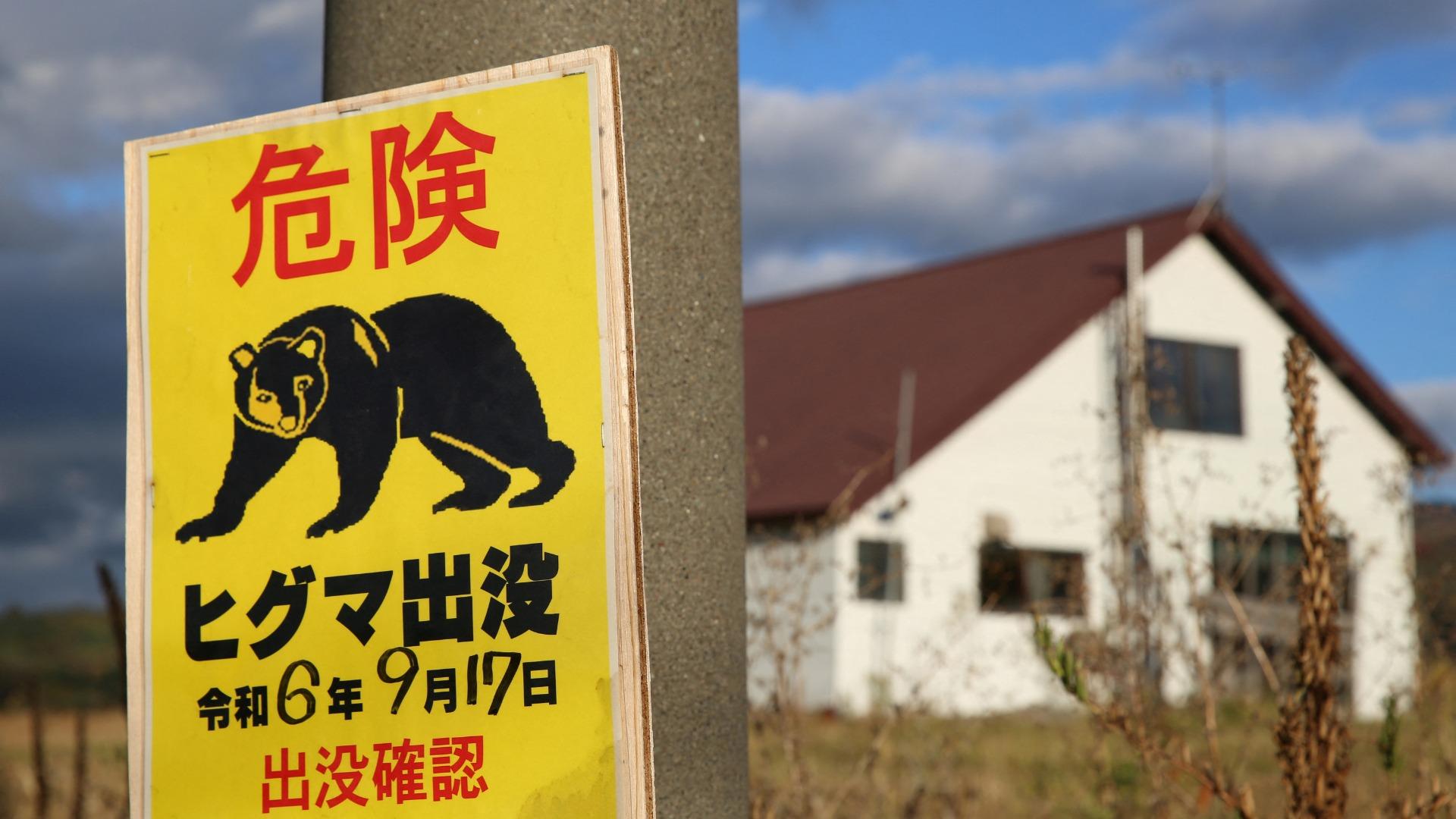
HANOI, Vietnam (AP) — Vietnam is rethinking how it copes with floods after a year of relentless storms collapsed hillsides and left vast parts of cities under water.
From mapping high-risk areas to reimagining “sponge cities” that can absorb and release water naturally, Vietnam is investing billions to adapt to what experts call a new era of climate extremes. Under a national master plan running through 2030, the government has pledged more than $6 billion to build early-warning systems and move communities out of danger.
In smaller cities like Vinh in central Vietnam, these ideas are taking shape. Drainage networks are expanding, flood basins are being carved and riverbanks turned into green spaces that can absorb and then drain off after heavy rains.
An onslaught of storms this year has underscored the urgency of that work: Ragasa, Bualoi, Matmo — each carved its own path of ruin. Record rainfall turned streets into rivers and sent slopes sliding, with barely any time for the land to recover between storms.
As Typhoon Kalmaegi was gathering strength on its path toward Vietnam this week, scientists warned it may not be the last. It's a glimpse of the country’s climate future — warmer seas fueling storms that form faster, linger longer, and dump heavier rain, hitting the poorest communities hardest.
“Vietnam and its neighbors are on the front lines of climate disruption,” said Benjamin Horton, a professor of earth science at City University of Hong Kong.
Climate change is reshaping Vietnam’s storm season
Scientists say the succession of storms battering Vietnam is not a fluke but part of a broader shift in how storms behave on a warming planet. Vietnam usually faces about a dozen storms a year, but the 2025 cluster was a “clear signal” of global warming, said Horton.
Ocean waters are now nearly 1 degree Celsius (33.8 degrees Fahrenheit) warmer than before the industrial era. So storms carry more moisture.
The economic toll has been severe for Vietnam, a developing country that wants to become rich by 2045. Floods routinely disrupt farming, fisheries, and factories — the backbone of its economy. State media estimate extreme weather has cost the country $1.4 billion in 2025.
Vietnam estimates it will need to spend $55 billion–$92 billion in this decade to manage and adapt to the impacts of climate change.
Vietnam’s cities aren’t built for climate shocks
About 18 million people, nearly a fifth of Vietnam’s population, live in its two biggest cities, Hanoi and Ho Chi Minh City. Both are on river deltas that once served as natural buffers against flooding. But as concrete spread over wetlands and farmlands, the cities lost their capacity to absorb downpours.
Flooding in Hanoi in October lingered for nearly a week in some neighborhoods. The city of over 8 million has outgrown its infrastructure and its colonial-era drainage system failed as streets turned into brown canals. Motorbikes sputtered in waist-deep water and the Red River’s levees were tested.
Vegetable seller Dang Thuan's home flooded knee-deep, spoiling her stock. Her neighborhood used to have several ponds, but they were filled in to build houses and roads. Now the water has nowhere to go.
“We can’t afford to move,” she said, “So every time it rains hard, we just wait and hope.”
In 1986-1996, the decade coinciding with ‘Doi Moi’ economic reforms that unleashed a construction boom, Hanoi lost nearly two-thirds of water bodies in its four core urban districts, according to a study by Kyoto University's Center for Southeast Asian Studies.
Between 2015 and 2020, it lost water bodies spanning the area of 285 soccer fields, state media have reported.
More than three-quarters of Hanoi’s area — including much of its densely populated core — is at risk of flooding, according to a 2024 study. Flooding in the city can’t be solved by building more, said Hong Ngoc Nguyen, lead author of the study and an environmental engineer at the Japanese consultancy Nippon Koei.
“We can’t control the water,” she said, pointing to Singapore’s shift from concrete canals to greener riverbanks that slow and hold stormwater instead of rushing it away.
A global problem with lessons in nature
The idea of designing cities to “live with water” is gaining traction globally, including in Vietnam.
City officials and residents in India’s Bengaluru are working to save the city’s remaining lakes, while Johannesburg in South Africa is trying to restore its Jukskei River.
Vietnam's recent floods have sparked a wider conversation about how cities should deal with storms.
The former director of the National Institute of Urban and Rural Planning, Ngo Trung Hai, told the state-run newspaper Hanoi Times that the city must learn to live with heavy rainfall and adopt long-term strategies. European business associations have urged Vietnam’s financial capital Ho Chi Minh City to adopt a “sponge city” approach.
Real estate developers have faced criticism in state media for improper building practices, such as building on low-lying land or roads unconnected to storm sewer systems and treating water bodies as “landscape features” rather than ways to drain storm water.
Some of Vietnam’s biggest property developers have begun to adapt. In the coastal tourism hub of Nha Trang, the Sun Group is building a new township modeled as a “sponge city” with wetlands covering 60 hectares (148 acres), designed to store and reuse rainwater to reduce flooding and absorb heat.
City planners must account for future climate risks, said Anna Beswick, who studies climate adaptation at the London School of Economics.
“If we plan based on past experience, we won’t be resilient in the future,” she said.
—
The Associated Press’ climate and environmental coverage receives financial support from multiple private foundations. AP is solely responsible for all content. Find AP’s standards for working with philanthropies, a list of supporters and funded coverage areas at AP.org.
LATEST POSTS
- 1
 23 Most Amusing Messages At any point Sent Among Youngsters and Their Folks
23 Most Amusing Messages At any point Sent Among Youngsters and Their Folks - 2
 フワちゃん、女子プロレス団体「スターダム」入団。芸能人がプロレスと関わる危うさと、問われる本気 #エキスパートトピ(中西正男) - エキスパート - Yahoo!ニュース
フワちゃん、女子プロレス団体「スターダム」入団。芸能人がプロレスと関わる危うさと、問われる本気 #エキスパートトピ(中西正男) - エキスパート - Yahoo!ニュース - 3
 二宮和也、主演『8番出口』の興収50億円突破に驚き「面白いものができたなと思っていたけれど、びっくり」(ENCOUNT)
二宮和也、主演『8番出口』の興収50億円突破に驚き「面白いものができたなと思っていたけれど、びっくり」(ENCOUNT) - 4
 Top Breakfast Food: What's Your Morning Joy?
Top Breakfast Food: What's Your Morning Joy? - 5
 函館に“活イカ”が帰ってきた「資源調査」名目で漁再開…笑顔の観光客の一方で漁業者は「逃がした魚は大きい」と悔しさにじませる(HBCニュース北海道)
函館に“活イカ”が帰ってきた「資源調査」名目で漁再開…笑顔の観光客の一方で漁業者は「逃がした魚は大きい」と悔しさにじませる(HBCニュース北海道)
 J1昇格いまだ決まらず…残り2節のJ2が異例の大混戦 8位鳥栖まで可能性 次節運命の首位攻防戦 水戸&長崎の昇格条件は(西スポWEB OTTO!)
J1昇格いまだ決まらず…残り2節のJ2が異例の大混戦 8位鳥栖まで可能性 次節運命の首位攻防戦 水戸&長崎の昇格条件は(西スポWEB OTTO!) Snow Man岩本照、ハプニングに咄嗟の対応「ボディガードの役やってるので」紳士的な対応に会場から感嘆の声(モデルプレス)
Snow Man岩本照、ハプニングに咄嗟の対応「ボディガードの役やってるので」紳士的な対応に会場から感嘆の声(モデルプレス) Independence from the rat race for Recent college grads: Techniques and Tips
Independence from the rat race for Recent college grads: Techniques and Tips Find the Marvels of the World with These Travels
Find the Marvels of the World with These Travels 全国的な「クマ禍」の影響はスポーツ界にも。サッカー、駅伝、野球、ゴルフ、様々な競技にその余波が #エキスパートトピ(下薗昌記) - エキスパート - Yahoo!ニュース
全国的な「クマ禍」の影響はスポーツ界にも。サッカー、駅伝、野球、ゴルフ、様々な競技にその余波が #エキスパートトピ(下薗昌記) - エキスパート - Yahoo!ニュース Perfumeあ~ちゃん、結婚発表 お相手は一般男性「心から応援してくれているファンの人です!笑」(スポーツ報知)
Perfumeあ~ちゃん、結婚発表 お相手は一般男性「心から応援してくれているファンの人です!笑」(スポーツ報知) 8 Espresso Bean Starting points All over the Planet
8 Espresso Bean Starting points All over the Planet 【高校駅伝】誤誘導で異例の救済 神奈川県大会で記録無効の三浦学苑が関東大会へオープン参加(日刊スポーツ)
【高校駅伝】誤誘導で異例の救済 神奈川県大会で記録無効の三浦学苑が関東大会へオープン参加(日刊スポーツ) 収録中に「周囲の壁が迫ってきた」――“陽キャ”の芸人ゆってぃがパニック障害と診断されて #今つらいあなたへ(Yahoo!ニュース オリジナル 特集)
収録中に「周囲の壁が迫ってきた」――“陽キャ”の芸人ゆってぃがパニック障害と診断されて #今つらいあなたへ(Yahoo!ニュース オリジナル 特集)













